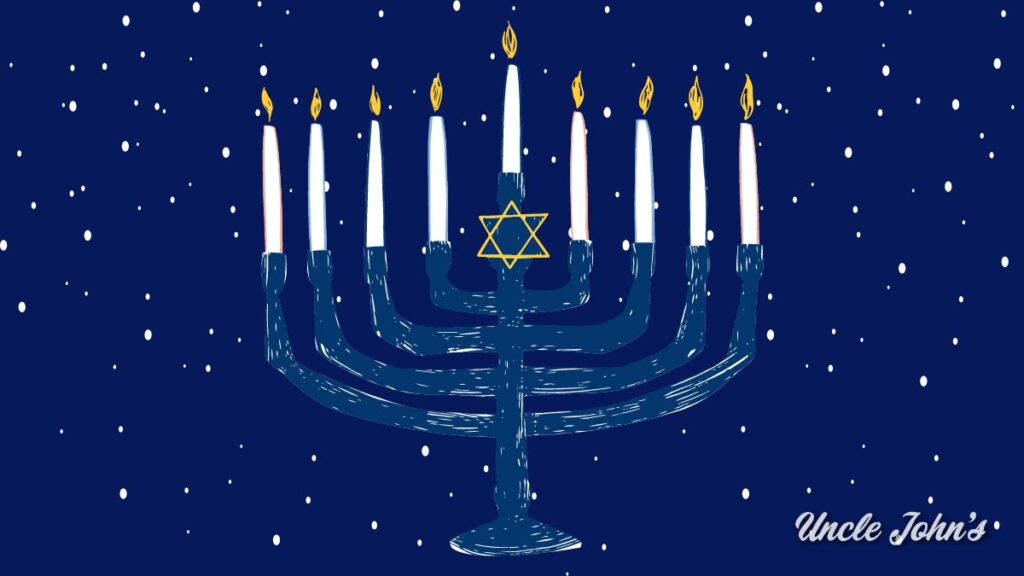By Brian Boone
Let’s delve into the history behind some of the most beloved and important traditions associated with Hanukkah, both celebratory and solemn.

The Menorah
In the second century, a contingent of Jewish soldiers called the Maccabees kicked out the Greeks and Syrians occupying Jerusalem and retook the city’s ancient and sacred Jewish temple. To keep the holy candelabrum, or menorah, lit in religious observance, the Maccabees secured enough oil for a single day. Instead, in an event known as the miracle of the oil, it lasted for eight days. That’s why today, during the eight days of Hanukkah, Jewish people light one candle daily and place it in a menorah. (Another allusion to the oil: Hanukkah foods are fried in oil, notably latkes, or potato pancakes.)
Dreidel
The most enduring form of a series of similar children’s games played in various regions of central Europe for centuries, the dreidel was only definitively linked to the Jewish community, and written about for the first time, in the 1700s. Something of a top combined with dice, each side of the dreidel (a derivative of a word in the Jewish dialect of Yiddish which means “to turn”) is adorned with a character that represent German words—G, H, N, and S. Those stand for ganz (all), halb (half), nischt (nothing), and schict (put). The message on whichever side is visible when the dreidel rests tells the spinner how much of the pot they win—all, half, none, or if they have to add some. However, the letters also refer to the first letters of the words in the Yiddish saying “Nes gasol haya sham,” or “a great miracle happened there,” a reference to the miracle of the oil.


Gelt
“Gelt” comes from a German word for money, and in the U.S., Jewish children commonly receive gold or silver foil wrapped chocolate coins around Hanukkah. This is a modern adaptation of a custom instituted in Jewish communities in Poland in the 17th century. In an allusion to the miracle of the oil, and a demonstration of generosity and abundance, parents gave their children coins to gift to their teachers. Before long, the kids wanted a cut of the cash, and then they kept wanting a few coins as they aged into their teenage years and entered rabbinical school. By the 18th century, the practice had evolved into poorer students visiting the homes of wealthy Jewish leaders to receive their gelt.
Blue and White
Many holidays are associated with certain colors, so celebrants can decorate thusly—black and orange for Halloween, red and green for Christmas, pastels for Easter, and blue and white for Hanukkah. This originated in “Judah’s Colors,” an 1864 poem by Bohemian Jewish writer Ludwig August von Frankl. (Judah, the biblical founder of the Tribe of Judah of Israel, is a foundational figure in Judaism.) As Von Frankl declared, “Blue and white are the colors of Judah; white is the radiance of the priesthood, and blue, the splendors of the firmament.” Those two colors became the de facto shades of Judaism, used on the flag of the Jewish state of Israel, as well as in Hanukkah materials.









